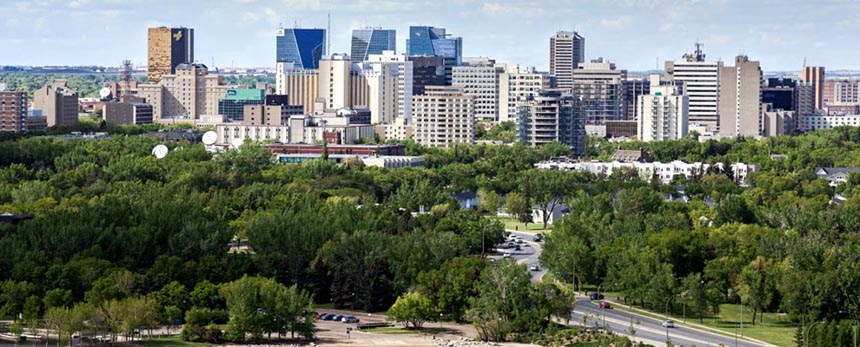After several years of an underperforming economy affecting the retail, office and industrial sectors in Saskatchewan’s two biggest cities, nobody is going to start popping any champagne bottles just because commodity prices have stabilized and the economy is expected to grow by a skinny 1.9 per cent this year.
“I think everybody has positive attitudes. They’re looking forward to some positive activity but there is just a little bit of hesitation,” said Glen Hill, Regina-based senior vice-president at Colliers International.
The best news is in the industrial side.
Lloyd Minion, vice-president and salesperson at Colliers in Saskatoon, said the recovery in Saskatoon started in the fourth quarter of 2017 and continues into 2018. The vacancy rate is 8.5 per cent, down from 9.75 in 2016 with most of the activity being lease renewals.
“People are taking advantage of the new market reality,” Minion said. “They could potentially move to a better building that’s more suited to their needs or get more building for less than they’re currently paying.”
During the boom times in 2013 and 2014, net rental rates were high, regardless of whether it was a newly constructed building or older stock. There was limited supply so the two types were being leased at similar rates.
“That has changed significantly now. We are seeing a fairly good gap between buildings built in the last five to seven years versus buildings built in the 1980s. When we were in our boom, people had limited options, they had to take what was available,” he said.
REGINA
Things are also looking good for the industrial sector a few hours to the south in Regina, where Hill said he’s glad there wasn’t much in the way of speculative construction a few years ago.
“We didn’t overbuild in the busy times, so there’s still a happy medium between too much product and not enough. Our vacancy rate is 3.75 per cent right now and it’s been around 3 per cent for 10 years,” he said.
One of the most significant projects on the books in years is the redevelopment of 33 acres that used to be home to the Sears warehouse, now known as Titan Business Park. Hill said two spaces in the 175,000-square-foot building are already leased and he’s confident it will be 75 per cent full later this year.
After seeing many developers scared out of town by high levies and heading to the suburbs, Hill said Regina recently reduced levies by 60 per cent to encourage them to come back.
“The levies and development expenses were so high nobody was doing anything,” he said.
The hardest-hit sector is office space.
John Chung, Regina-based commercial sales and leasing realtor at Royal LePage, said the city has a vacancy rate of about 13 per cent, due in large part to new capacity coming on stream in the last couple of years.
It was just a few years ago that confidence was sky-high with vacancy rates well below five per cent.
“A lot of builders thought, ‘let’s go build office buildings because demand is high.’ Buildings were popping up. They over built,” he said.
There’s no silver bullet to fix the office sector, only time so that the market can absorb the vacancies.
“Landlords are doing deals at lower rates and with incentives, such as free rent for a year, to attract tenants. I’ve seen advertisements for office buildings where landlords aren’t charging rent and are just asking that tenants pay their share of the operating expenses,” he said.
A bright spot in commercial real estate is retail. Maxwell Lee, a sales person at Colliers in Saskatoon, attributed the relatively positive performance to a lack of speculative retail in Regina when the Saskatchewan’s economy was the envy of the country.
“There isn’t a lot of excess space. Even when we went through the rapid growth period from 2010 to 2013, when we were the hottest economy out there, nobody really overbuilt retail space,” he said.
The vacancy rate currently sits at 3 per cent but if you include the recently-closed Sears store, it’s closer to 4.5 per cent. The mothballing of Sears at Midtown Plaza released 160,000 square feet to the market.


.png;w=120;h=80;mode=crop)
